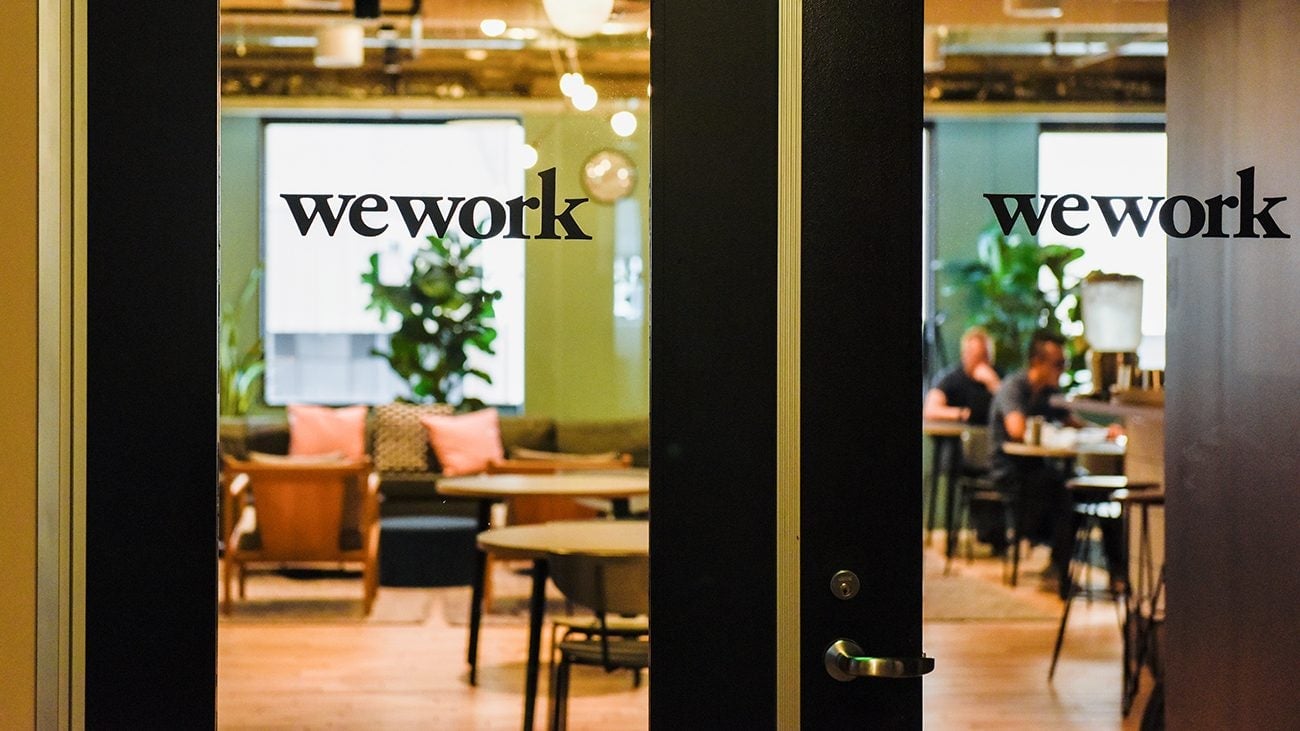The pandemic is giving WeWork a new lifeline
The pandemic has been an unexpected silver lining for WeWork.


The pandemic has been an unexpected silver lining for WeWork.
On Monday, commercial real estate giant Cushman & Wakefield said it wants to pour a $150 million investment into the co-working company as it aims to go public via a special purpose acquisition company (SPAC) this year, the Wall Street Journal first reported; the merger is expected to value WeWork at $9 billion.
The move reflects the shift away from the traditional office as Covid-19 continues to alter back-to-office plans. Many employees are still not heading back to the office. As of last week, the average occupancy rate across the 10 largest US cities was 34%, according to data from Kastle Systems, a property management company that tracks access-card swipes from 2,600 buildings and 41,000 buildings across 47 states. The remote workforce is also expected to grow permanently, which means workers will be looking for more options when they want to escape the home office.
Looking to profit from the trend, commercial real estate companies have been making more deals with co-working startups recently. Back in February, CBRE, a commercial real estate services company, invested $200 million to acquire a 35% stake in Industrious, WeWork’s competitor. A month later, Newmark Group, a global commercial real estate services firm, announced it will acquire Knotel, another co-working company, which filed for Chapter 11 protection in January.
The dramatic rise and fall of WeWork
Just a few years ago, WeWork looked like it was going to implode, after reports emerged of a reckless culture, excessive spending, and corporate mis-governance. After a failed attempt to go public in 2019, the company went through a major shake up—ousting CEO Adam Neumann, selling a number of businesses, and shedding thousands of jobs.
At that time, the companies using WeWork—and other co-working spaces—were largely small businesses and entrepreneurs without the financial deep pockets of corporate clients. Even WeWork admitted the future of its model was uncertain, warning investors that many of its clients wouldn’t be able to withstand an economic downturn.
Since Neumann’s exit, WeWork has kept a low profile. Last February, Sandeep Mathrani, the former CEO of Brookfield Properties’ retail group, took over and focused on turning the company around—as well as slashing costs. He has reportedly cut the company’s burn rate by half, and WeWork now has at least $2 billion in liquid assets, plus a $1 billion commitment from majority owner SoftBank.
Co-working is no longer niche
That’s partly because co-working is no longer reserved for independent contractors and freelancers. As of the first quarter of 2021, more than half of WeWork’s membership base was made up of big enterprises, according to the company.
As the pandemic forces employers to rejigger their future office plans, many are considering co-working spaces, which would further benefit WeWork. In April, 40.5% of employers surveyed anticipated increased use of flexible spaces as part of post-pandemic workplace strategy, up from 29.1% in October, according to data from JLL, a global real estate services company. In China, WeWork’s membership visits have rebounded to pre-pandemic levels, providing a window of how flex office space continues to be in demand.
Landlords, meanwhile, are also starting to move away from traditional lease structures and towards partnership agreements with flex office providers, where they share profits, losses, and capital expenditures, according to a CBRE report from last year.
Co-working has been expanding outside the corporate world, too: WeWork partnered with universities to offer up space for studying—which may point to universities embracing a more permanent version of the hybrid learning models.